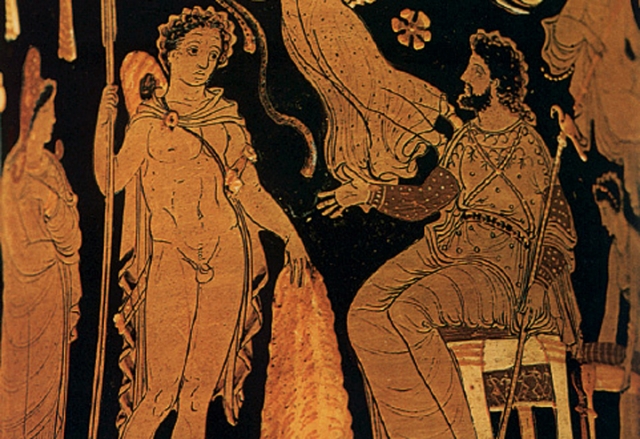Remains of a facility for the extraction of metals in Lavrio, Photo: floraattica.blogspot.gr
The Golden Fleece known from mythology is probably not the brainchild of the ancient Greeks, PhD student in geology at the Aristotle University of Thessaloniki Marcos Vaksevanopoulos says. But what makes the fleece of a simple animal an important symbol of power? And why was it so important that the king of Yolkos Pelias had assigned Jason the task of organizing the whole expedition of Argonauts to Colchis to bring him the Golden Fleece?
"The answer is easy if we study the way people had extracted gold from gold-bearing rivers in the Bronze Age. This applies particularly to the Fasis River (now Rioni) near Colchis in modern Georgia, which was known for the large amount of native gold extracted from it. Initially, the extraction of the precious metal was done using mainly sheep skins, that miners immersed into the river in order for the small gold particles to become attached to them. Then they dried the skins and shook or burned them to separate the collected gold. In the course of the years, they improved this technique and started to put the skins on wooden frames in the riverbeds," the PhD student said. He presented the results of his study on "Ancient mines: From Pelion of Jason to Lavrio of Pisistrat" in the natural science museum in Volos.

Jason is giving the Golden Fleece to his father Pelias
According to Marcos Vaksevanopoulos, literary works about the expedition of Argonauts and the Trojan War provide valuable information that the economic and geopolitical centres at that time were in the Black Sea region. "This is because the events they describe relate to the transition from the Bronze to the Iron Age."
Places where humans mined and processed iron for the first time in 1400 BC have been recently studied in Georgia. This shows that the transition from the processing of bronze to the processing of iron happened precisely in the Black Sea region. "Therefore, Herodotus had reasonably placed there the tribe of Halibite who processed iron exactly in that region."
Centuries-old knowledge had led to the discovery of ways of iron mining and melting. Travellers of that time had probably brought the knowledge of this new metal to Ancient Greece. The most powerful and stable iron weapons would mark the new era.
According to Marcos Vaksevanopoulos, most probably, the so-called "invasion of the Dorians" had been associated with the extraction and processing of metals. "Let's not forget that the main engine of the economy was the possession of metals and regions where metals were available," the PhD student recalled.
Ancient mines in Mount Pelion
Jason, however, did not start his journey from a region lacking knowledge in the mining and processing of metals. The inhabitants of ancient Yolkos knew gold and bronze. However, Mount Pelion was not known for its metal deposits some time ago. "Nevertheless, more than 30 areas with a high content of iron, lead and copper ores were discovered in the region of Zagora in Kalamaki village." An ancient mine has been found in the village of Ksurihti too. The total length of its tunnels is over 100 metres. There are rich deposits of ores near the surface in the surrounding areas.
"We could reasonably assume that the main reason for organizing expeditions to regions of the opposite shores of the Black Sea was the exhaustion of local ore deposits. The demand for new and rich deposits of bronze and iron as well as small military conflicts were the most likely reasons for the expeditions," he said.
Ancient Lavrio
According to the PhD student, an important moment in the history of Lavrio was 546 BC when Pisistrat returned from his exile. He brought with him experienced metallurgists from Mount Pangaea in Thrace and later, the period of Lavrio’s rise began. The construction of large tunnels connecting with the surface through vertical openings was initiated. A rich deposit was discovered in 483 BC that led to the economic prosperity of Athens. Themistocles had persuaded the Athenians to use the revenue from this discovery to build 200 triremes, with which they later defeated the Persian fleet at the Battle of Salamis.
"So, we understand that even the course of history depended on metallurgy because it set the pillars of economy and therefore of politics," Marcos Vaksevanopoulos said and defined the rise of Lavrio in antiquity as "the first industrial revolution BC."
Other large metallurgical centres in ancient times were Thassos, the region of Skapti or the opposite area, the mountains Pangaea, Angistro, the northwestern part of Halkidiki peninsula and the islands of Sifnos and Milos. There are dozens of underground galleries for extraction of metals there and they have not been studied enough according to the PhD student. Because of a lack of basic knowledge, many of them have already been destroyed.